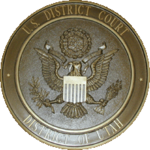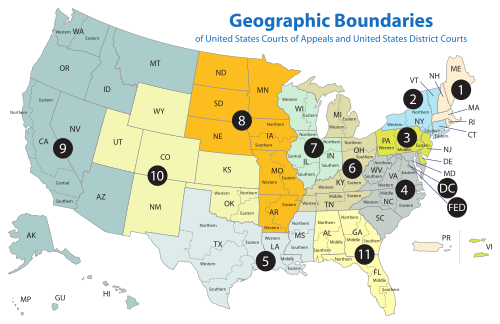|
United States District Court for the District of Utah
The United States District Court for the District of Utah (in case citations, D. Utah) is the federal district court whose jurisdiction is the state of Utah. The court is based in Salt Lake City with another courtroom leased in the state courthouse in St. George. Appeals from the District of Utah are taken to the United States Court of Appeals for the Tenth Circuit (except for patent claims and claims against the U.S. government under the Tucker Act, which are appealed to the Federal Circuit). The United States Attorney's Office for the District of Utah represents the United States in civil and criminal litigation in the court. As of May 4, 2022[update] the United States attorney is Trina A. Higgins. Current judges As of April 12, 2024[update]:
Former judges
Chief judgesChief judges have administrative responsibilities with respect to their district court. Unlike the Supreme Court, where one justice is specifically nominated to be chief, the office of chief judge rotates among the district court judges. To be chief, a judge must have been in active service on the court for at least one year, be under the age of 65, and have not previously served as chief judge. A vacancy is filled by the judge highest in seniority among the group of qualified judges. The chief judge serves for a term of seven years, or until age 70, whichever occurs first. The age restrictions are waived if no members of the court would otherwise be qualified for the position. When the office was created in 1948, the chief judge was the longest-serving judge who had not elected to retire, on what has since 1958 been known as senior status, or declined to serve as chief judge. After August 6, 1959, judges could not become or remain chief after turning 70 years old. The current rules have been in operation since October 1, 1982. Succession of seats
See also
ReferencesExternal links
|
|||||||||||||||||||||||||||||||||||||||||||||||||||||||||||||||||||||||||||||||||||||||||||||||||||||||||||||||||||||||||||||||||||||||||||||||||||||||||||||||||||||||||||||||||||||||||||||||||||||||||||||||||||||||||||||||||||||||||||||||||||||||||||||||||||||||||||||||||||||||||||||||||||||||||||||||||||||||||


